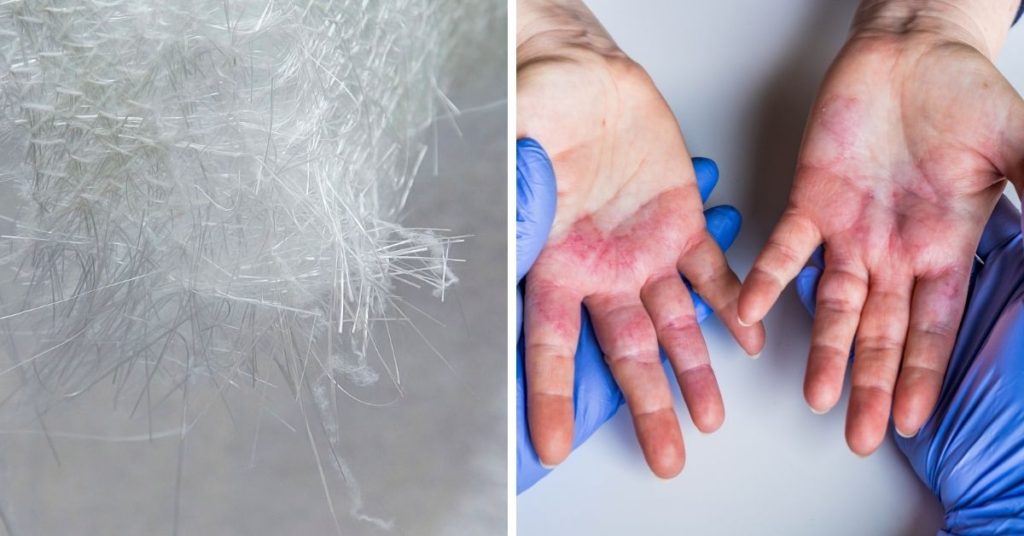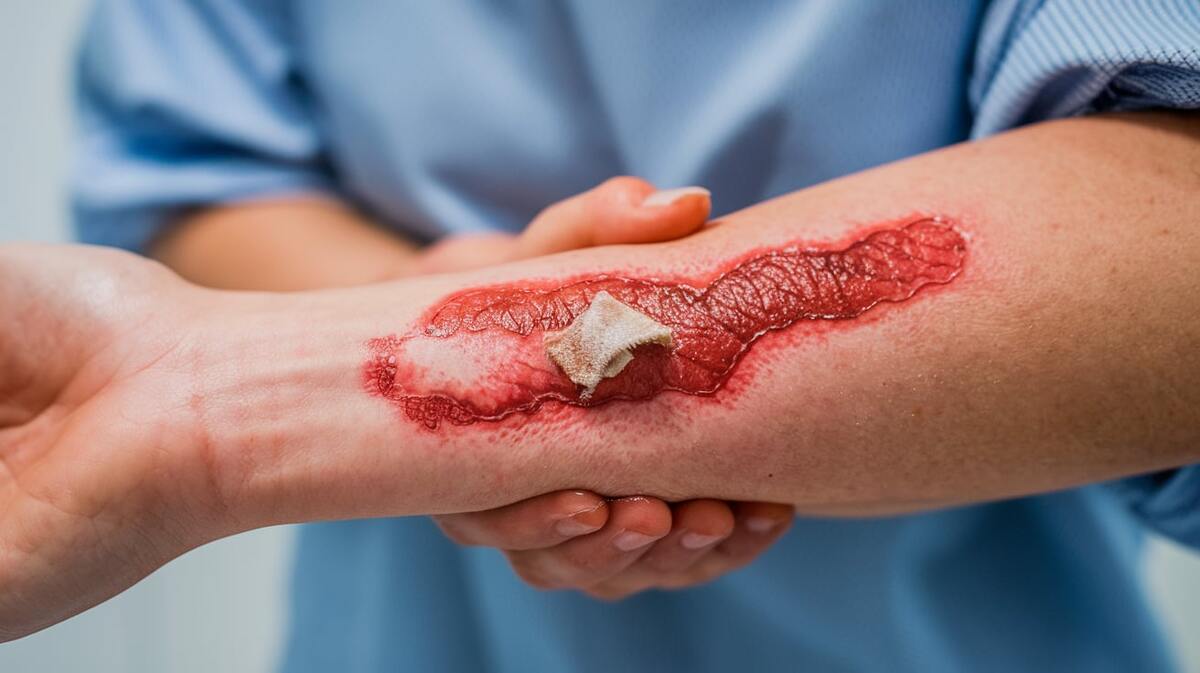How Can You Get Fiberglass Out Of Your Skin

Fiberglass insulation is a staple in homes and commercial buildings for a reason: it’s an affordable and effective way to boost energy efficiency, slashing heating and cooling costs. A properly insulated building minimizes heat transfer, reducing the workload on your HVAC system and potentially qualifying you for rebates and incentives. But handling fiberglass can be a prickly experience. Getting those tiny glass fibers embedded in your skin is no fun. This article provides a comprehensive guide to safely and effectively remove fiberglass from your skin, minimizing discomfort and potential irritation. We’ll also cover preventive measures to protect yourself during future energy-saving projects.
Why Fiberglass Insulation Matters (And Why Protection is Key)
Before we delve into removal techniques, let's quickly highlight why fiberglass insulation is so prevalent. According to Energy Star, proper insulation can save homeowners up to 15% on heating and cooling costs. For businesses upgrading to energy-efficient HVAC systems, it’s an essential complement. Pairing improved insulation with smart thermostats and sensors creates a synergistic effect, optimizing energy use based on real-time conditions. Many utility companies offer rebates for insulation upgrades, further boosting the ROI of your energy-saving efforts. These savings directly contribute to a healthier bottom line and a smaller carbon footprint.
However, the downside of fiberglass is its potential to irritate skin. The fibers are designed to trap air, creating a thermal barrier. But those same fibers can easily penetrate the skin, causing itching, redness, and discomfort. While not inherently dangerous, the irritation can be significant and long-lasting if not addressed promptly.
Immediate Actions: The First Line of Defense
The moment you suspect fiberglass has come into contact with your skin, resist the urge to scratch. Scratching only exacerbates the problem by driving the fibers deeper into the skin and spreading them to other areas. Here’s what to do immediately:
- Avoid Rubbing: As mentioned, rubbing or scratching will only worsen the situation.
- Rinse with Cool Water: Use cool or lukewarm water to gently rinse the affected area. Hot water can open pores, potentially allowing more fibers to enter.
- Do NOT Use Soap Initially: Soap can sometimes irritate the skin and may make it more difficult to see and remove the fibers.
Proven Techniques for Fiberglass Removal
Several methods can effectively remove fiberglass from your skin. The key is to choose the right technique based on the severity and location of the exposure.
1. Tape or Adhesive Removal
This is one of the most common and effective methods. Use a strong adhesive tape, such as duct tape, packing tape, or even masking tape. The goal is to gently lift the fibers from the skin without causing further irritation.
- Apply the Tape: Press the tape firmly onto the affected area.
- Lift Carefully: Slowly and gently peel the tape away from the skin. Avoid ripping it off quickly, as this can cause more irritation.
- Repeat as Needed: Continue applying and removing tape until you no longer see visible fibers on the tape.
- Dispose of the Tape Properly: Immediately discard the used tape to prevent the fibers from spreading.
An alternative to tape is using a facial peel. The sticky nature of a peel can effectively grab the fibers.
2. Wet Washcloth or Soft Brush
This method is best for more widespread or less concentrated exposure. A soft washcloth or brush can help dislodge fibers without being too abrasive.
- Use a Clean Washcloth or Brush: Make sure the washcloth or brush is clean to avoid introducing bacteria to the irritated skin.
- Wet the Cloth or Brush: Dampen the cloth or brush with cool water.
- Gently Wipe the Affected Area: Use a gentle, sweeping motion to wipe the skin. Avoid scrubbing.
- Rinse Thoroughly: After wiping, rinse the area thoroughly with cool water.
- Wash the Cloth or Brush Immediately: Wash the washcloth or brush separately from other laundry to prevent contamination.
3. Exfoliation
Gentle exfoliation can help remove embedded fibers. However, be cautious not to over-exfoliate, as this can irritate the skin further.
- Choose a Gentle Exfoliant: Opt for a mild exfoliating scrub or a soft exfoliating sponge. Avoid harsh or abrasive scrubs.
- Apply Gently: Gently massage the exfoliant onto the affected area in a circular motion.
- Rinse Thoroughly: Rinse the area thoroughly with cool water.
- Moisturize: Apply a moisturizer to soothe the skin after exfoliation.
4. Baking Soda Paste
Baking soda has mild abrasive properties and can help draw out fibers. It also has soothing properties that can help relieve itching.
- Make a Paste: Mix baking soda with a small amount of water to create a paste.
- Apply the Paste: Apply the paste to the affected area.
- Let it Dry: Allow the paste to dry completely.
- Rinse Gently: Rinse the area gently with cool water.
5. Medical Attention
In rare cases, fiberglass exposure can lead to more severe reactions. Seek medical attention if:
- The irritation is severe and does not improve with home treatment.
- You develop signs of infection, such as pus, redness, or swelling.
- You experience difficulty breathing or other allergic reactions.
Soothing Irritated Skin After Removal
Once you've removed the fiberglass, it's essential to soothe the irritated skin. Here are some helpful remedies:
- Cool Compress: Apply a cool compress to the affected area to reduce inflammation and itching.
- Calamine Lotion: Calamine lotion can help relieve itching and soothe irritated skin.
- Aloe Vera Gel: Aloe vera gel has soothing and anti-inflammatory properties that can help heal the skin.
- Moisturizer: Apply a fragrance-free, hypoallergenic moisturizer to keep the skin hydrated and prevent further irritation. Look for products containing ceramides or colloidal oatmeal.
- Antihistamine Cream or Oral Antihistamine: For persistent itching, consider using an over-the-counter antihistamine cream or taking an oral antihistamine.
Prevention is Key: Protecting Yourself During Fiberglass Insulation Projects
The best way to deal with fiberglass is to avoid contact in the first place. Taking preventive measures during insulation projects can save you a lot of discomfort and potential health issues. Consider the following:
- Wear Protective Clothing: Cover your skin with long sleeves, long pants, gloves, and a hat or hair covering.
- Use Eye Protection: Wear safety glasses or goggles to protect your eyes from fiberglass fibers.
- Wear a Dust Mask or Respirator: A dust mask or respirator will prevent you from inhaling fiberglass fibers. NIOSH-approved N95 respirators are recommended.
- Work in a Well-Ventilated Area: Good ventilation will help reduce the concentration of airborne fibers.
- Clean Up Thoroughly: After working with fiberglass, vacuum the area thoroughly with a HEPA filter vacuum. Wipe down surfaces with a damp cloth.
- Wash Clothes Separately: Wash your work clothes separately from other laundry to prevent the fibers from spreading.
- Consider Alternatives: If possible, explore alternative insulation materials like cellulose or mineral wool, which are less irritating. While typically more expensive, the comfort and ease of handling may be worth the investment, especially for DIY projects.
Smart HVAC Integration and Energy Efficiency: A Holistic Approach
Removing fiberglass from your skin might seem unrelated to energy efficiency, but it highlights the importance of careful handling when implementing energy-saving measures. Upgrading to a smart HVAC system, installing a smart thermostat, or improving insulation are all steps towards a more energy-efficient home or business. However, safety should always be a top priority.
Smart HVAC systems can learn your preferences and adjust temperature settings automatically, maximizing energy savings without sacrificing comfort. Smart thermostats allow you to control your heating and cooling remotely, ensuring that you're not wasting energy when you're away. Integrating these technologies with improved insulation creates a holistic approach to energy efficiency that can significantly reduce your carbon footprint and lower your utility bills.
Furthermore, many states and utility companies offer rebates and incentives for energy-efficient upgrades. Check with your local utility company and the Energy Star website to see what programs are available in your area. These incentives can help offset the upfront costs of energy-efficient improvements, making them even more attractive.
Conclusion: Stay Safe, Save Energy
Fiberglass insulation is a valuable tool for improving energy efficiency and reducing your carbon footprint. While handling fiberglass can be irritating, following the removal techniques outlined in this article can help minimize discomfort. Remember to always prioritize safety by wearing protective clothing and equipment when working with fiberglass. By taking a holistic approach to energy efficiency, including smart HVAC integration, proper insulation, and preventive safety measures, you can create a more comfortable, sustainable, and cost-effective living or working environment. Embrace the future of energy efficiency – responsibly and safely.










